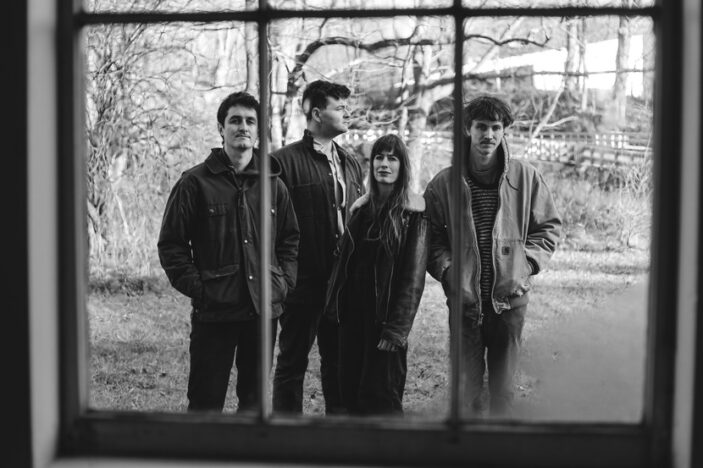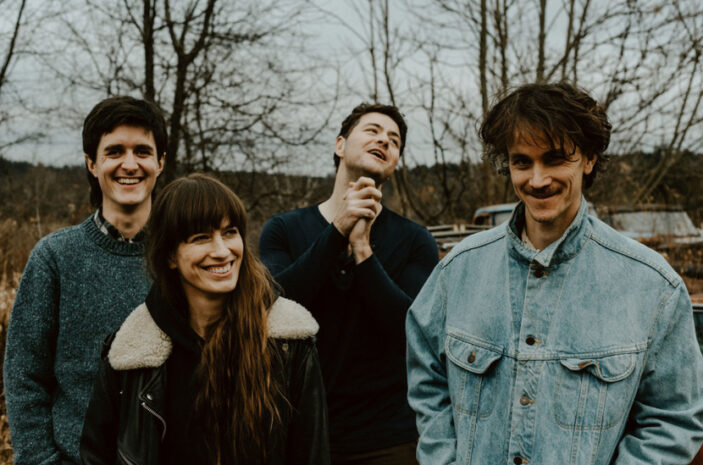
As a music lover, I often find myself haunted by a persistent existential dread. I worry about the countless extraordinary songs in recorded music history that end up discarded due to artistic indifference or the constraints of genre standards and “radio-friendly” requirements. It’s a self-imposed anxiety, perhaps, but The Felice Brothers newest release, Valley of Abandoned Songs, justifies these fears in the best possible way.
Dropping today, Valley of Abandoned Songs is the latest offering from New York’s folk-Americana-rock-country stalwarts, The Felice Brothers. This surprise follow-up to 2023’s Asylum On The Hill features a 13-song collection of demos and recordings that didn’t make the cut for 2019’s Undress or Asylum On The Hill. Lead singer and songwriter Ian Felice initially intended to release this compilation quietly online, but long-time friend Conor Oberst (Bright Eyes) had other plans. He launched the label Million Stars specifically to release Valley of Abandoned Songs.
It might sound like hyperbole to suggest that a collection of B-sides warrants the creation of a whole new music label, but that’s precisely what The Felice Brothers have achieved. With this album of overlooked gems, they reinforce their status as one of the most underappreciated bands in the world. Any songwriter worth their salt would envy the luxury of discarding songs of this calibre. If you didn’t know these tracks were initially left off previous albums, you’d be none the wiser. A treasure trove of poetic folk-Americana, the album is really something special.
Kicking off the album is “Crime Scene Queen,” a deceivingly catchy, sun-soaked soiree about a girl and Los Angeles. Lead singer Ian Felice croons with his signature Bob Dylan style to folk-pop sounds that feel like a seedy film-noir gumshoe soundtrack, reminiscent of Australia’s Tim Freedman of The Whitlams. Next up is “Flowers By The Roadside,” a lovely folky tune that saunters and shuffles its way into your brain. A staple of their songs, this one sounds like sepia tones and film flickers, wringing every drop of yesteryear nostalgia out of the folk-poetry. With lines about sitting amongst flowers and butterflies as the world goes on, it is a sweet reflection on the speed of life and the importance of stopping to look around.
Following is one of the best songs on the album, “New York By Moonlight.” It can be best described as a Billy Joel song written by Tom Waits and sung by Bob Dylan. Offering a wonderful piece of admiration and admonishment for the beauty and despair of New York City, the intertwining vignettes of old doormen at The Ritz and flower-carrying prostitutes are contrasted by the Sinatra-tinged stylings of a crooning piano bar song. Lines like “We’ve got every vice here in paradise, and we’re so glad you came” contrast with scenes of late-night strolls bothering pigeons in the rain, making the song both an ode and a reflection. The visual storytelling and poetic devices on show here are masterful.
“Younger As The Days Go By” is a more traditional folk-pop song but one that is ridiculously catchy. With a bopping drum shuffle, staccato melody, and acoustic guitar riff, this upbeat and, dare I say, poppy tune is a nice reprieve. Lines like “playing jacks in a boxcar for the lonestar state” evoke images of escaping across an America that no longer exists with a bindle over the shoulder. The instrumentation here is also really fun, with the introduction of an organ and super catchy guitar parts. “So Long John” offers a nice contrast, stripping things down. With a whistle and guitar to open, this one is another example of the excellent and effortless storytelling the band seems to produce at will.
“Black Is My True Love’s Hair” carries the traditional Americana folk stylings with a poetic tune about searching for lost love. This one is a good example of the poetic inspiration the band often draws on, serving almost as well as a poem as it does a song. With lyrics like “black is my true love’s hair, amber of eyes, but she’s gone like a bird of passage, under darkening skies,” the album’s lyrics will be a joy to read on the back of a vinyl sleeve.
“Racoon, Rooster and Crow” is next, serving up a wonderfully fun parable about a racoon, rooster, and crow that doesn’t take itself too seriously. This one has a fun country styling, the kind that is less “booze, dirt roads, and trucks” and more line dancing by the hay in a barn. The subject matter tells the story of these anthropomorphic characters and could easily have found itself on the soundtrack to Disney’s Robin Hood.
“Strangers Arms” is another total tonal shift, showing the band’s versatility. Styled almost like a piano ballad from Elton John, this one is a beautifully sincere, keys-led tune. Despite the keys taking centre stage, Ian Felice shows the diversity of his voice, too. Despite not soaring or going for something massive, there is always a heart and honesty to his delivery that can only exist when there is a real connection with the pen and the music.
“Birdies” is next, with another barn-dance-inspired offering. Just when you think there might be a skippable tune, this one leads in with a chorus that really wants to burn itself into your thoughts like a plasma TV left on too long. With absolutely no right to be as catchy as it is, the juvenile style in lines about little birds and apples on the ground will burrow in and catch you out humming it into the steering wheel.

“Tomorrow Is Just a Dream Away” is a beautifully crafted acoustic ballad, carried by a wonderfully melancholic vocal performance and sweet melody. “Let Me Ride Away With The Horseman” is another tune reminiscent of The Whitlams, mixing in some lovely piano stylings and another example of painting pictures with words. The addition of a haunting choir is a standout.
“Its Midnight and the Doves are in Tears” proves difficult to avoid easy comparisons to Dylan. Maintaining the creativity, this one is a reflective piece with biting lyrics and a suitable pub-choir la-da-da-da melody with a rapturous break from the bleak lyrics. Rounding out the album is “To Be A Papa,” a beautiful shuffling ballad that, through its wonderful lyrics, heartfelt vocal performance, and lovely folky-acoustic styling, is representative of the album and offerings across the entire work.
Following the closure of the album, what you’re left with is a clean and concise collection of songs that were never intended to fit as a collection but ultimately blend seamlessly into one another. Proof to my fear that sometimes the valley of abandoned songs is a lost and found of unappreciated gems.
Being a bit of a ragtag collection there are a few repeating metaphors and lines that appear and seem to show the stream of consciousness of the songwriting. Despite that there is a great deal of variety in tone, musicality and song choice that mean this release feels fresh from top to bottom. The album also doesn’t conform too singularly into country or folk, dancing in between. With more traditional stylings too, the songs won’t hit the ears like the radio hits currently described as either genre.
From the surface you could miss the incredible lyricism and poetry in the bones of these songs. It’s easy to be carried away by the carnival of Americana and nostalgia that shelters a rich musicality underneath its high top tent. But for those who pay the most attention, so too will they find the most joy. But for those that enjoy it just in passing, you’ll still walk away with a bag of riches from the valley of abandoned songs.
![]()
![]()
![]()
![]()
![]()
FOUR AND A HALF STARS (OUT OF FIVE)
Valley of Abandoned Songs is out today. Grab it HERE
Related Posts:
- Digital Review: Tim Minchin: Back delivers on the old songs, new songs…
- Book Review: Monsters, motherhood, and abandoned malls abound in Chris…
- Album Review: The Teskey Brothers - The Winding Way (2023 LP)
- Ball Park Music joins Rudimental, Groove Armada, Milky Chance, The…
- Herb & Chilli Festival to return to the Yarra Valley for 2024
- Fletcher Gull shares the art that inspired his debut album Songs From Before
